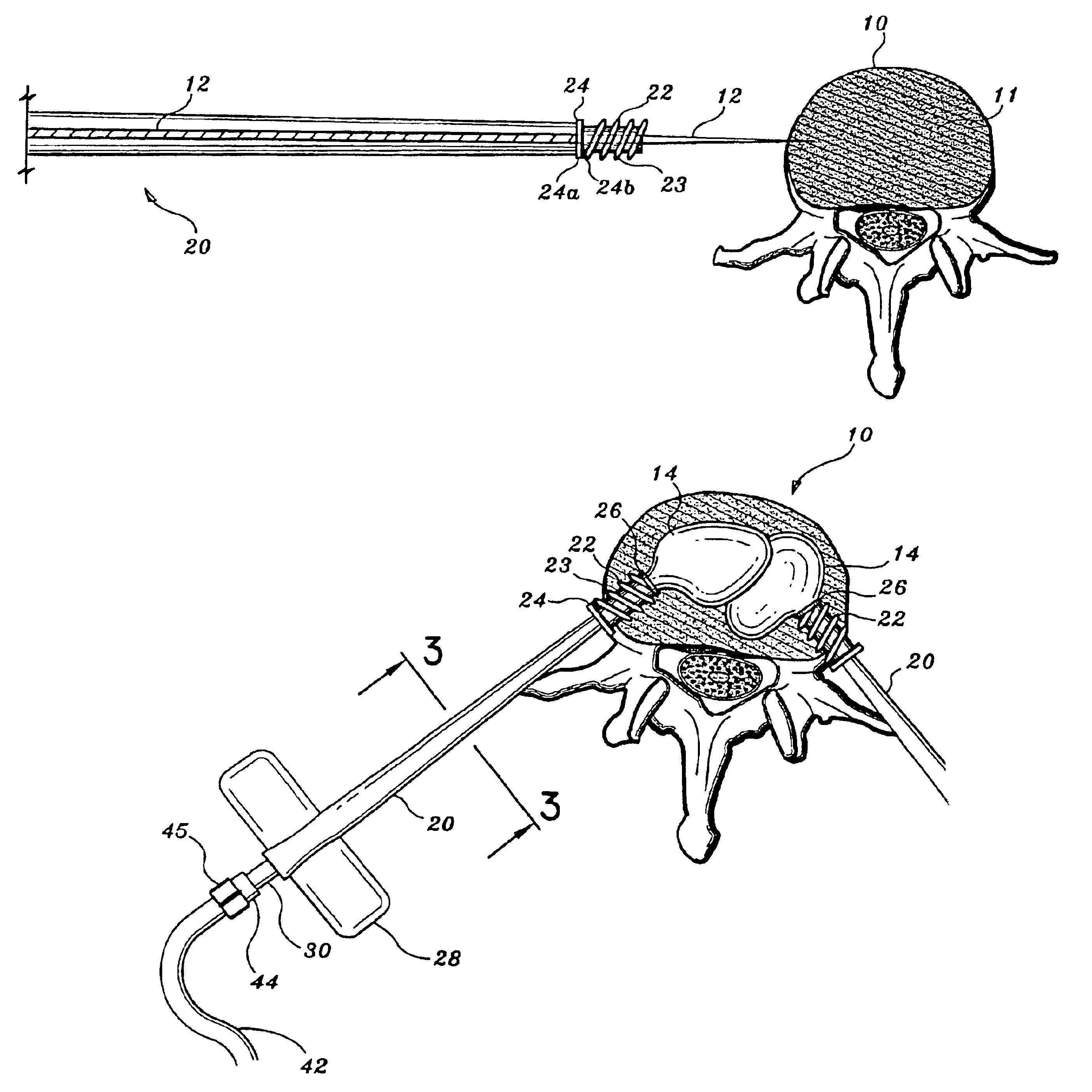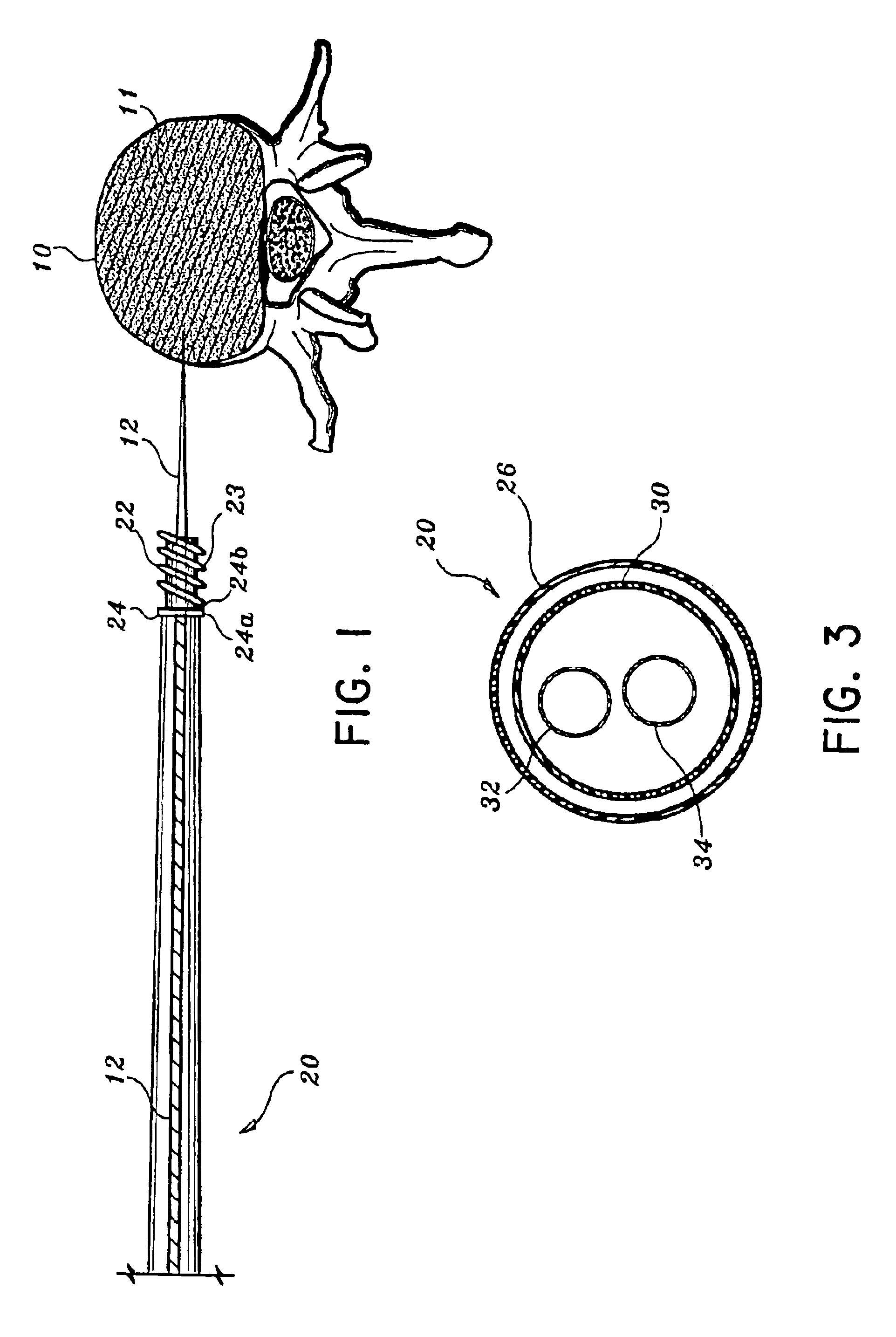Interbody device and method for treatment of osteoporotic vertebral collapse
a technology of intervertebral devices and vertebrae, which is applied in the direction of osteosynthesis devices, internal osteosynthesis, prosthesis, etc., can solve the problems of shortened and deformed spines, significantly higher incidences of bone fractures, and weakening of overall bone strength, so as to facilitate the rotation of threaded parts and facilitate the mounting of elongated members
- Summary
- Abstract
- Description
- Claims
- Application Information
AI Technical Summary
Benefits of technology
Problems solved by technology
Method used
Image
Examples
Embodiment Construction
The preferred embodiments of the apparatus and methods disclosed herein are discussed in terms of orthopedic vertebral procedures and instrumentation thereof. It is envisioned, however, that the disclosure is applicable to a wide variety of procedures including, but, not limited to joint repair, non-union fractures, spinal stabilization and the like. In addition, it is believed that the present method and instrumentation finds application in both open and mininally invasive procedures including endoscopic and arthroscopic procedures wherein access to the surgical site is achieved through a cannula or small incision.
In the discussion which follows, the term “proximal”, as is traditional, will refer to the portion of the structure which is closer to the operator, while the term “distal” will refer to the portion which is further from the operator.
The following discussion includes a description of the interbody vertebral device followed by a description of the preferred method for trea...
PUM
| Property | Measurement | Unit |
|---|---|---|
| Length | aaaaa | aaaaa |
| Force | aaaaa | aaaaa |
| Biodegradability | aaaaa | aaaaa |
Abstract
Description
Claims
Application Information
 Login to View More
Login to View More - R&D
- Intellectual Property
- Life Sciences
- Materials
- Tech Scout
- Unparalleled Data Quality
- Higher Quality Content
- 60% Fewer Hallucinations
Browse by: Latest US Patents, China's latest patents, Technical Efficacy Thesaurus, Application Domain, Technology Topic, Popular Technical Reports.
© 2025 PatSnap. All rights reserved.Legal|Privacy policy|Modern Slavery Act Transparency Statement|Sitemap|About US| Contact US: help@patsnap.com



